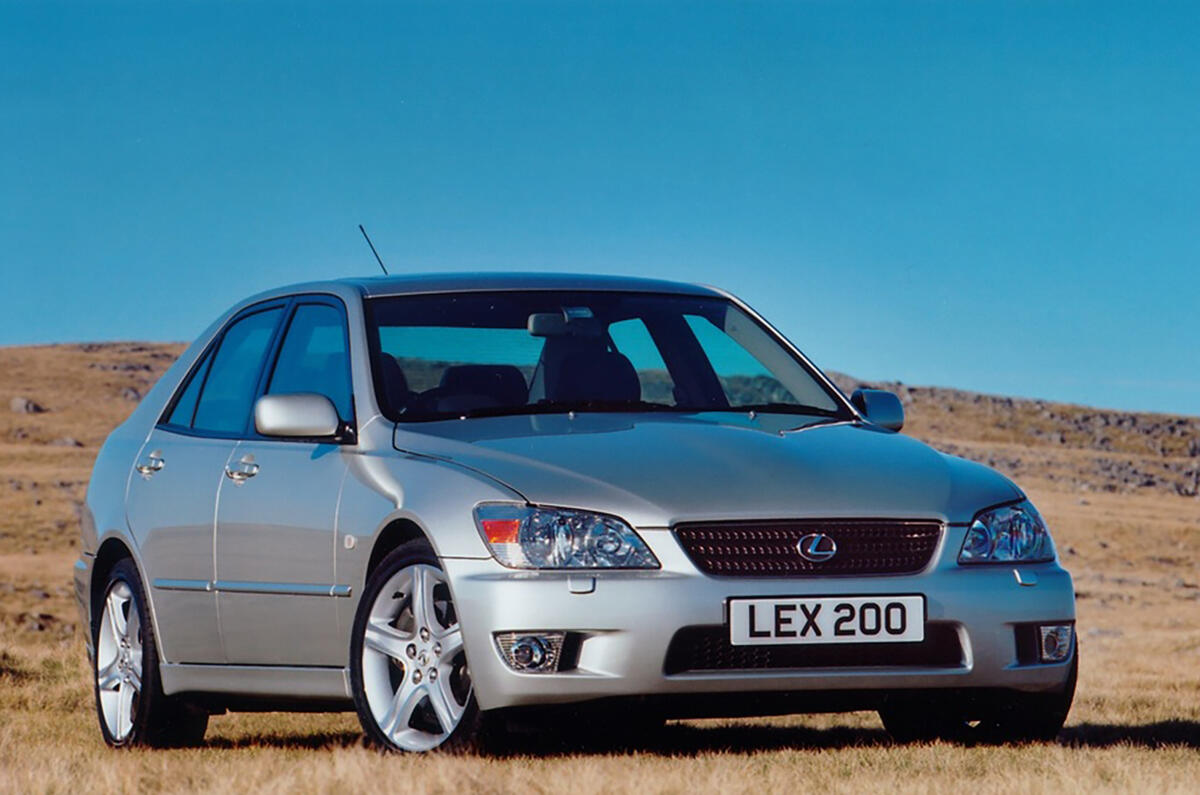Years back, a mate and I used to amuse ourselves watching Japanese drift videos. The sport of attacking bends at improbable oversteer angles was big stuff in Japan at the turn of the century, young guns drifting their Corolla AE86s, Skylines and Mazda RX-7s illicitly in the Hakone Hills and licitly, on specially prepared tracks.
The drama of watching this was heightened – considerably – by the sight of synchronised drifting, often of impossibly large and sedate saloons, and by near-hysterical Japanese commentary.
It was into this world that Lexus, until 1998 a maker of large, subtly-functioning and somewhat baroque premium saloons launched the lithe, revvy and rear-wheel drive IS200. This pleasingly compact saloon was powered by a 2.0 litre straight six, just like a BMW 3 Series, presented a noticeably short front overhang, just like a 3 Series, and like most engines with half-a-dozen in-line pistons, was strong on smooth and weak on earthmoving luggery. It needed revs to make it go hard.
The need for quick-spinning crank speed was driven by a lot more than a lot more than the need to extract torque, the IS200’s entire character folded around the goal of creating an entertaining sports saloon. This was radical stuff for Lexus, which had previously specialised in comfort-oriented, low effort, premium sedans slushing about at the low revs favoured by the torque converters of their automatic transmissions. The big-engined, soft-sprung GS300 and LS400 were ideal for loping along the American Interstate.
The IS200, on the other hand, was created with a more invigorating approach in mind. Apart from being compact, Lexus’s pert new rear-driver had been developed under the control of one Nobuaki Katayama, who led the creation of the drift-focused AE85/86 Toyota Corolla coupes before working on Toyota’s Le Mans and rally campaigns. This was a man who knew what a driver’s car should be, and knew how to make cars that would yes, drift.
Sure enough, the IS200 had just the kind of chassis balance you’d hope for from a sporting saloon, and better still, determined revving and tight-turn attacks produced deliciously entertaining oversteer moments. Especially if your IS was fitted with an optional limited slip differential This was an entirely different kind of Lexus, a Lexus to raise your heart-rate rather than sink it, a Lexus more in the mould of a European car. That was no accident, its creation very clearly inspired by the BMW 3 Series – Lexus was happy to admit as much – a car of fast-rising popularity both on its home continent and in the US.
But the IS was far from a shameless copy. It had distinguishing features of its own, in particular a pair of rear lamp-clusters that would create an entire cottage industry of copyists selling ‘Lexus-style’ lights. They look a little tame now, but the lamp-within-a-lamp, three-dimensional nature of these cluster sets certainly accelerated the trend towards ever-more elaborate rear lights.





Join the debate
Add your comment
If drifting is your thing then go ahead, it's the hero's on the road who drift that shouldn't.